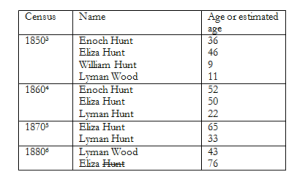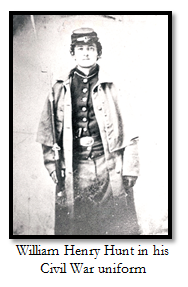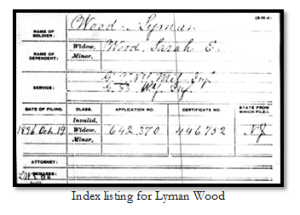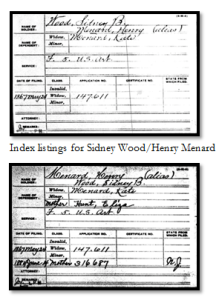Person of Interest: James P. Snell
Relationship: None
 Source Citation: James P. Snell, History of Sussex and Warren Counties, New Jersey with Illustrations and Biographical Sketches of the Prominent Men and Pioneers (Philadelphia: Everts & Peck, 1881).
Source Citation: James P. Snell, History of Sussex and Warren Counties, New Jersey with Illustrations and Biographical Sketches of the Prominent Men and Pioneers (Philadelphia: Everts & Peck, 1881).
Document Description: This 748-page book is dual county (Sussex and Warren) history published in 1881. I blogged previously about county histories while discussing Dennis Strait. That post has the background of county histories and why they can be useful in your genealogical and historical research. Since my family is mainly in Sussex County and this blog is, after all, StraitFromNJ, I would be remiss to not point you to this very informative book about the early history of Sussex County.
The book is broken into three major sections:
- Brief histories of New Jersey, Sussex and Warren Counties including early government, indigenous people, pioneers, Revolutionary involvement, slavery and servitude, iron industry, and Civil War involvement and regimental rosters
- Sussex County including subsections on organization, civil history, boundary line, civil lists, internal improvements, education, judicial, medical, press, physical features, and towns and villages
- Warren County including subsections on organization, geology, civil history, internal improvements, judicial, medical, press, societies, and townships and boroughs
Each of the subsections on the towns and villages has an abundance of information that can include but are not limited to cemeteries, industries, government, natural features, settlement, roads, local stories, churches, schools, railroads, tax collections, law enforcement, fire departments and fires fought, etc.
Biographical sketches and illustrations are scattered throughout the book. The table of contents lists the biographies and items illustrated. Illustrations include maps, schools, portraits including person’s signature, court houses, public buildings, and factories.
The copy I use regularly is the digitized version of the book at Archive.org. However, I found it digitized in a few places:
- Archive.org in various electronic formats
- Ancestry.com as a pdf file
- Barnes and Noble as a free Nook Book
Document Scan/Transcription: Ah, no. I am not going to transcribe the whole book here. I will however pull out a few interesting examples of what can be found in this book and other county histories like it.
 How places got their names
How places got their names
According to Heckewelder, who is good authority, “Walpack” is a corruption from Wahlpeek, which in the Indian language signified a turn-hole or whirlpool in the water. It is componnded [sic] of the two Indian words, woa-lac, “a hole,” and tup-peek, “a pool.” The name “turn-hole” – a provincialism now obselete – was uses to designate a sudden bend of a stream by which the water when deep was turned upon itself into an eddy or whirlpool. The turn-hole in the Lehigh, above Mauch Chunk, was many years ago an object of interest to travelers in that wild region. Howell’s map of 1792 indicates the exact spot. There is a “turn-hole” in the bend of the Delaware at the mouth of the Flat Brook, from which Walpack doubtless took its name. It is visible in low water, and during great floods it becomes a powerful whirlpool, sucking in large pieces of timber and carrying them out of sight. [1]
 Indigenous people’s history
Indigenous people’s history
Teedyuseung, the last king of the Delawares, was in many respects a very remarkable and noble character. Although he took up the tomahawk against the whites in 1755, and was the chief leader in that struggle, it was because he believed he has a just cause. He was made king of the Delawares west of the mountains in 1756. In May of that year he and his Indians left their headquarters at Wyoming and repaired to Diahoga, a strong Indian town at the forks of the Susquehanna, now Athens, Pa. In July, 1756, he visited Bethlehem, at the invitation of the Governor, preparatory to the first conference held at Easton, and is spoken of by Reichel as follows in his “Memorials of the Moravian Church:” … [2]
 Newspaper establishment
Newspaper establishment
The New Jersey Herald – This newspaper was established by Col. Grant Fitch in the fall of 1829, it being the third enterprise of the kind within the present limits of the county of Sussex. …
The Herald was first printed in an old building on Main Street, opposite the Cochran House, where where William W. Woodward’s hardware-store now stands. The size of the paper was twenty by twenty-eight inches, the reading-matter being set in clean bourgeois and the advertisements in bourgeois and brevier type. The subscription price was two dollars per year. The first press was an old-fashioned Washington lever press, which was worked by hand. This answered the purpose until 1840, when it became necessary to enlarge the paper. To avoid the expense of a new press the experiment of enlarging the old one was tried, and it was successfully accomplished by the skillful workmen in the Lafayette foundry, then owned and operated by the irrepressible Democrat Alexander Boyles. Twice during the first ten years of the Herald’s existence its proprietor was awarded the contract for printing the Legislative Journal. The gross proceeds of each contract amounted to about six hundred dollars, and it required about six months, with such mechanical facilities as were available, to complete the work. ….[3]
Illustrations and descriptions of local buildings
The “Cochran House” was erected in 1842 by Dennis Cochran, then owner of considerable real estate along Spring Street. [Newton] [4]
 Fires fought (in Newton subsection)
Fires fought (in Newton subsection)
The fire in 1877 was at Clark’s furniture store, on Park Place; two fireman were injured by a falling wall. Seven men, in charge of the pipe on Simonson’s law-office roof, had a narrow escape from death. The minutes of the company say, “Foreman H. C. Bonnell noticed the swaying of the wall and ordered the men from the roof. While three of the men were still on the ladder when the wall fell, crushing though the roof just left of the firemen, and instantly killing S. Halstead Shafer, who was in the office.” Theodore Morford and Hubbard Stevens, who were in the office with Mr. Shafer, had a narrow escape. Both were seriously injured, and were confined to their homes for several weeks. [5]
 Octogenarians and old residents
Octogenarians and old residents
The following list of persons of eighty years and upwards exhibits the names and ages of the oldest living residents of Newton in the year 1875, as shown by the census of that year (the age is given at last birthday): Margaret G. Anderson, 85; Elizabeth Townsend, 91; Hannah Meachum, 83; Sarah Konkle, 81; Mary McIntire, 89; Rebecca Drake, 80; Susan Cornell, 89; Jane Northrup, 85.
Only two of the above named were living in June 1880, – Rebecca Drake, at Newton, and Susan Cornell, in Hardwick township, Warren Co., – at which the list of octogenarians was given by the census enumerators as follows: Jane Brower, 80; Jacob Mabee, 80; Anna B. Cassidy, 80: Job J. Drake, 80; Jacob Strader, 80; James Sutton, 80; Moses Woodruff, 81; Ann S. Armstrong, 82; Anna M. Johnson, 82; Benjamin Booth, 84; Rebecca Drake, 85; Nancy Pettit, 86; Charles Cinderbox, 89.[6]
 Locations of early schools
Locations of early schools
On the Easton road, where now is the corner of Liberty and High Streets, stood in the early days an old log school-house. It was erected during the past century, but in what year is not known. Pemberton Britton’s mother, who was born in 1781, went to school in the “old log” house when she was quite young, – about 1789.[7]
 Masonic activity
Masonic activity
Baldwin Chapter, No. 17, R. A. M.
This chapter of the Royal Arch branch of Masonry was instituted in Newton in January, 1867, by Grand High Priest Israel Baldwin, of Newark, in whose honor it was named. G. H. P. Baldwin always manifested a great interest in this organization in various and practical ways, one of which was the presentation to it of an extremely beautiful and very valuable High Priest’s breastplate, whose setting of precious stones is undoubtedly equal to any in the State.
Its convocations are held monthly in Masonic Hall. Officers are elected at the December convocation. Its first officers were: M∴ E∴ W. H. Hagaman, High Priest; E∴ Theodore Morford, King; E∴ H. M. Ward, Scribe; P. B. Horton, Capt. of Host; Jonathan Havens, Prin. Soj.; D. L. Wyckoff, R. A. Capt.; Jesse Ward, M. 3d Veil; S. J. Coursen, M. 2d Veil; E. D. Goodrich, M. 1st Veil; Theo. Morford, Treas.; Thos. C. Elston, Sec.; R. B. Westbrook, Chaplain; Aaron H. Bonnell, Sentinel; J. R. Stuart, Thos. Anderson, Trustees.[8]
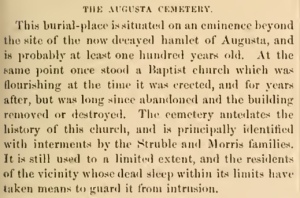 Cemeteries and burial grounds
Cemeteries and burial grounds
The Augusta Cemetery – This burial-place is situated on an eminence beyond the site of the now decayed hamlet of Augusta, and is probably at least one hundred years old. At the same point once stood a Baptist church which was flourishing at the time it was erected, and for years after, but was long since abandoned and the building removed or destroyed. The cemetery antedates the history of this church, and is principally identified with interments by the Struble and Morris families. It is still used to a limited extent, and the residents of the vicinity whose dead sleep within its limits have taken means to guard it from intrusion.[9]
Analysis: County histories have great value beyond their biographical sketches. Many researchers focus on these books as sources of genealogical information found within the sketches. But they are rich with other information.
From just the examples above, we learn how Walpack, Sussex County, got its name, that the Native American Teedyuseung was the last king of the Delawares, that the New Jersey Herald was first printed in the fall of 1829, that the Cochran House was on Spring Street in Newton, that Pemberton Britton’s mother attended school in a log house in 1789, that a fire took the life of S. Halstead Shafer in 1877, that Margaret G. Anderson died between 1875 and 1880 being somewhere between 85 and 90 years old, that W. H. Hagaman was a High Priest in the Masonic organization, and that Augusta Cemetery was still being used in 1881 even though the Baptist church that stood next to it was long gone.
All of the information found in county histories could be used to add dimension and perspective to our ancestor’s lives. I find it extremely boring to read a biography that contains just the dry facts of a person’s life. I want to know what the street looked like when my ancestors went to visit Spring Street, what the geography looked like at the time, what types of schools they attended, and how dramatic events like fires affected their day-to-day lives.
Additionally, the tidbits above give me clues on where to look next. If I had someone who was a Baptist in Augusta in the early 1800s, I would know that records for that old church belonging to the churchyard cemetery might not exist or have been moved to the new church. If I had someone who was a Mason, I would be curious about what a High Priest does and want to know what the heck 1st, 2nd, and 3rd Veils are in the organization.
This is an authored work with James P. Snell compiling the information in the format he found pleasing and correct for his purposes. It is a true digitized copy of the original book. It does not appear to have been tampered with and can be considered the same as the original. The information found within the book is indeterminate as we cannot figure out if the information is firsthand, secondhand, or even thirdhand. The evidence found within the book could be a mixture of direct (explicit), indirect or even negative depending on the research question asked.
CONCLUSION
It’s not too far from the truth that learning some history should be an unavoidable part of genealogy. To be an awesome family historian, you must search out sources and information that help you form a more complete picture of your ancestors. Don’t be afraid to read a little history; even if you ancestors aren’t specifically mentioned.
[1] James P. Snell, History of Sussex and Warren Counties, New Jersey with Illustrations and Biographical Sketches of the Prominent Men and Pioneers (Philadelphia: Everts & Peck, 1881), 24.
[2] Snell, 39.
[3] Snell, 222.
[4] Snell, 284.
[5] Snell, 282.
[6] Snell, 254.
[7] Snell, 267.
[8] Snell, 270.
[9] Snell, 397.


